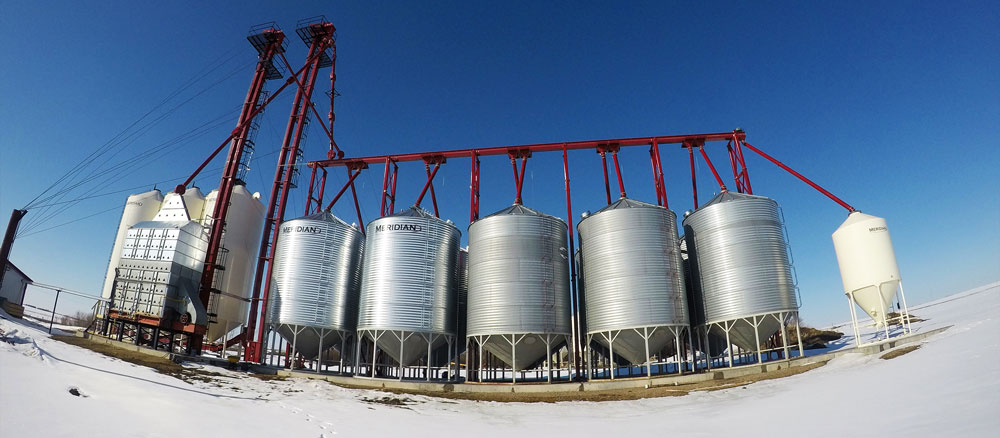|
Deciding on a capacity that you want to put through your system effects your equipment design drastically. It is essential to understand what types of product you are going to be moving, their weight and what that means for your capacity. A storage facility designed to provide 3,000 BPH of corn will not necessarily give you 3,000 BPH of barley. A fertilizer plant designed to provide 200 MT/hr of urea will not necessarily give you 200 MT/hr of Ammonium Sulfate. The weight of each product that goes through your system will effect these two factors in your equipment design: HORSEPOWER and FILL RATE. In addition to this, it is extremely important to understand each component of your system and to know where your BOTTLENECKS & LINCHPINS are in order to ensure optimal performance. 1. HORSEPOWERHeavier products require more horsepower to move. It's a simple, self-explanatory concept but it bears remembering when you are working with your dealer/supplier. When choosing motors for your conveyance, make sure the horsepowers are based on the heaviest material you will be moving. That way, you can always move that material at the desired rate, and any lighter product will not pose a problem to your motors. It's far more cost-effective to use less of your available horsepower than to require more! 2. FILL RATEThe rate at which a conveyor, auger or bucket elevator is filled directly effects the capacity the equipment provides. A heavier product requires less volume to reach the capacity you require compared to a lighter product. For example, Urea which weighs between 48-52 lbs/cu ft. may require a 70% fill rate of a screw conveyor to reach 200 MT/hr at its established speed. If you run Potash (which weighs between 66-70 lbs/cu ft.) that same auger would need to be filled at a fraction of the rate that Urea required to reach the same 200 MT/hr. When choosing the size of your conveyance, make sure you are basing the size on the required fill rate of the lightest product you will be moving. This will ensure you do not run into a situation where you have maximized the fill rate of your heavier products but cannot reach the desired capacities with lighter products. 3. BOTTLENECKS & LINCHPINSThis concept is well-known on the farm but it bears repeating. Whenever you feed from one piece of equipment to another, you are only going to realize the capacity of the lowest rated implement. If you are feeding your 10,000 BPH leg with a 6,000 BPH conveyor; the leg will only carry at 6,000 BPH. Inversely, if you feed a 6,000 BPH leg with a 10,000 BPH conveyor, the leg will only take away 6,000 BPH and you will overflow . When designing your system it is both helpful and important to lay out a chart of the equipment being used in order of the product flow, make note of each unit's capacity and make sure that there are no bottlenecks to contend with. One other thing to keep in mind is that you will want to expand eventually. Understand your system flow and determine which piece of equipment is your linchpin (meaning it will be the piece of equipment that drastically effects the capabilities of the rest of the system).You may want to oversize the capacity on your system's linchpin and make room for cost-effective growth in the future.
Your comment will be posted after it is approved.
Leave a Reply. |
Archives
April 2020
CategoriesCOMING EVENTSGEAPS
Minneapolis, MN Date: March 21-24 Booth #: 2325 |


 RSS Feed
RSS Feed
11/29/2018
0 Comments